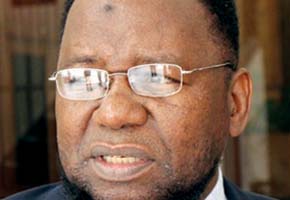The ‘Ethnocide of the art of Batonga bamu Zimbabwe’
upon the indigene render them incapable of adapting.
This includes imperial colonisation and the subsequent random annexation of the original land and water rights of many indigene in Africa.
For the record, stalwart, indigenous peoples of Africa, Asia original America and the Australias have long been castigated by the West for standing in the way of development, which becomes grounds for dispossessing them and destroying their way of life.
Their disappearance is then described as inevitable “as such archaic backward folk cannot be expected to survive in the modern world”.
But whilst genocide is universally condemned, Ethnocide is not only ignored when it comes to certain sects of African peoples, it is actually advocated as appropriate policy for the imposition of Western education, religion and culture.
EXPLOITATION OF BA TONGA ART
In Zimbabwe, the culminative effects of forced relocation of people, colonisation and ungoverned and uncontrolled cultural exploitation have taken its toll on the Tonga people, their art and culture.
Thousands of years of history and culture in the form of Tonga artifacts are being removed and exported from Zimbabwe in huge quantities. This practice is apparently 31 years old, as old as Independent Zimbabwe (post 1980).
It could have a much longer pre-independent history.
Regrettably, the wealth and art that forms part of the daily life of the Ba Tonga BamuZimbabwe becomes a cheap Western décor trinket with no cultural value, once removed from its context.
Having many original Tonga relatives and friends from Binga, I asked my close colleagues, Vincent Libanga and Mongu Mbandwe, about the importance of their artifacts. A unanimous summation was that the artifacts were a living cultural history and that the Tonga’s rapport with their cultural art “is a relationship of intense intimacy – it is ancestral memory and intelligence, embodied in these artifacts”.
Libanga and Mbandwe explained, “Some things are just meant to be preserved. A people without a culture is like a drum without a skin – the sound and echo are lost”.
EXPORTING AFRICAN
MEMORY
Subsequently, I witnessed in horror as two container loads of Ba Tonga baskets, drums, doors, modern coffee tables made from Tonga doors, headrests, clay and gourd pipes and ceremonial pots being packed for
freighting. I was appalled at the sheer quantities; All were original antique Ba Tonga artifacts
It must be noted that one of the Ba Tongs’s greatest cultural resources are the rich art forms, cultural and functional ceremonial objects which are coveted world-over, yet adequate investment has not been forthcoming to preserve this unique world heritage of Zimbabwe.
On the contrary, Ba Tonga basketry from Binga can now be seen on several overseas websites, including former Rhodesians, selling under the various labels of Native American, Ethnic, Folk Art and Rhodesiana Antiquity! One US cyber-vendor boasts of having collected over 900 Tonga baskets ” . . . with incredible art décor values at licensed historical prices pegged and approved in the US . . .”
It is obvious that this “ethnocide” of the cultural material of the Ba Tonga bamuZimbabwe and others on the Zambezi environs is a real and tangible one.
It is our duty to salvage, preserve and record this precious culture whilst it is still a living art form. If these works of art are not preserved and recorded by the Ba Tonga bamuZimbabwe their disappearing culture will no longer be available for posterity.
The fact that the Ba Tonga bamuZimbabwe still continue to produce and own their original artifacts reveals a formal continuity that cuts across the changes, displacements and ruptures of modernity.
The reprehensible fact that there is no national repository or museum for Tonga culture, art, religion, language, medicine, apparel, weaponry, architecture, music, instruments, orature, botany, psychology and other disciplines and notions of progress is lamentable.
The understanding of the Ba Tonga cannot be fulfilled without the empirical knowledge of the society and its art forms. The Ba Tonga bamuZimbabwe, were recorded as numbering half a million in 1997, now they number an estimated 760 000 plus. They are the original dwellers of the Zambezi and the proprietors of the “Mose oya Tunya” known by its Colonial pseudonym “Victoria” Falls on the great Zambezi River.
This transnational water highway traverses Zambia, Zimbabwe, Namibia, Angola, and Mozambique.
The source begins at Kalene Hill in the DRC, down Angola to Chavuma Falls North West of Zambia.
It touches Namibia on the Caprivi Strip and makes a grand entry into Zambia and Zimbabwe at Victoria Falls to Kariba and then Kanyemba and falls again at Mpata Gorge into Mozambique, cuts across Cahora Basa Rapids and flows out into the Indian Ocean. It is Africa’s 4th longest river after the Nile, Congo and Niger. The surrounding land is the original habitat of the different groups of Ba Tonga.
It is thus imperative that the Ministry of Education, Sports and Culture, and the ineffective National Arts Council, National Gallery of Zimbabwe and the various other “cultural” entities prevent the wholesale looting of the cultural artifacts of the Ba Tonga bamuZimbabwe.
We need to protect this cultural patrimony and regain the sense of being true proprietors of our National Treasures.
- Dr. Tony Monda holds a PhD. in Art Theory and Philosophy, and a Doctorate in Business Administration (DBA) in Post-Colonial Heritage Studies. He is an author, art critic, and practicing visual artist.







Comments